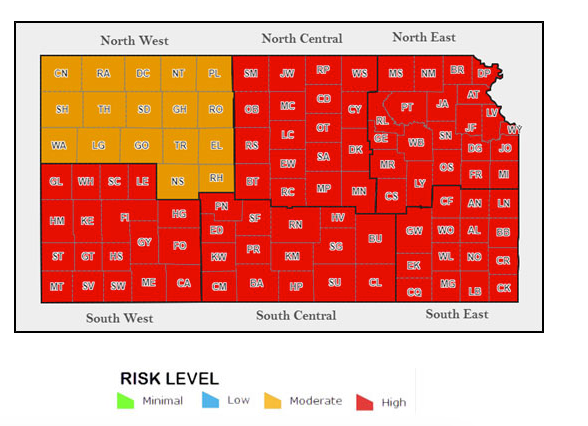
LINCOLN, Neb. (AP) — Two people have now died from West Nile virus in eastern Nebraska this year. The state Department of Health and Human Services said both deaths were confirmed this week within the territory served by the Three Rivers District Health Department, which includes Dodge, Saunders and Washington counties in eastern Nebraska.
Officials said both people who died with the mosquito-borne virus were older adults with underlying health conditions,. So far this year, West Nile virus has been found in 12 Nebraska counties, and 27 human cases have been confirmed. Last year, the state reported 15 human cases of the virus and one death.
In August the CDC reported the state's first confirmed human case of West Nile virus in Kansas this year was in Saline County, according to the Centers for Disease Control and Prevention. The agency has not reported additional cases in the state.
The Kansas Department of Health and Environment's weekly report indicates most counties in the state are at high risk for West Nile infections.
Click here to view the Kansas West Nile Virus Weekly Surveillance and Transmission Risk Report
West Nile virus is the most common mosquito-borne disease in Kansas and the United States.
The risk of acquiring a West Nile infection depends on various factors including time of year, number and location of infected species of mosquitoes, and the number of days with sufficient heat, according to the KDHE web site.
Warm temperatures increase the rate of mosquito larvae development which increases the mosquito population size. The risk of WNV transmission usually reaches peak transmission during July, August, and September.
The KDHE says to avoid mosquito bites, follow the three Ds:
DRAIN
●Eliminate standing water where mosquitoes live and breed.
●Empty standing water from tarps, old tires, buckets, and other places where rainwater collects. Use larvicide in low-lying areas where water cannot be removed.
●Refresh water for bird baths, pet bowls, and wading pools at least every three days
DRESS
●Cover your skin with clothing when outdoors. Wear protective clothing when practical (long sleeves and pants).
●Limit outdoor activities when mosquitoes are most active.
DEET
●Use insect repellents that contact DEET or other EPA-approved repellents. When used as directed, EPA-registered insect repellents are proven safe and effective, even for pregnant and breastfeeding women.






